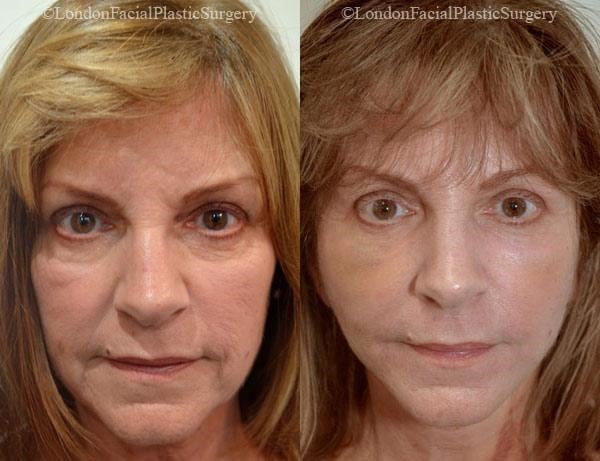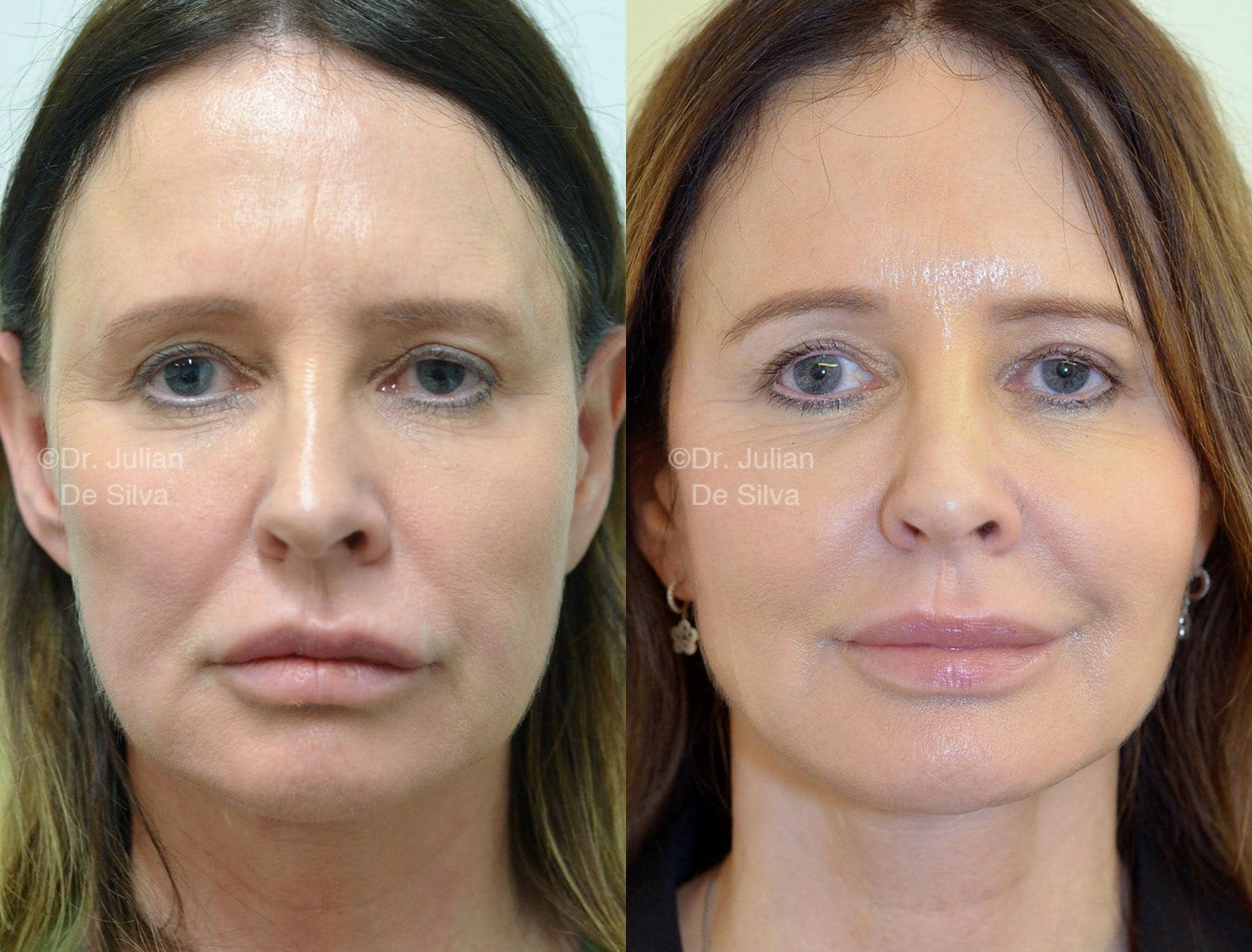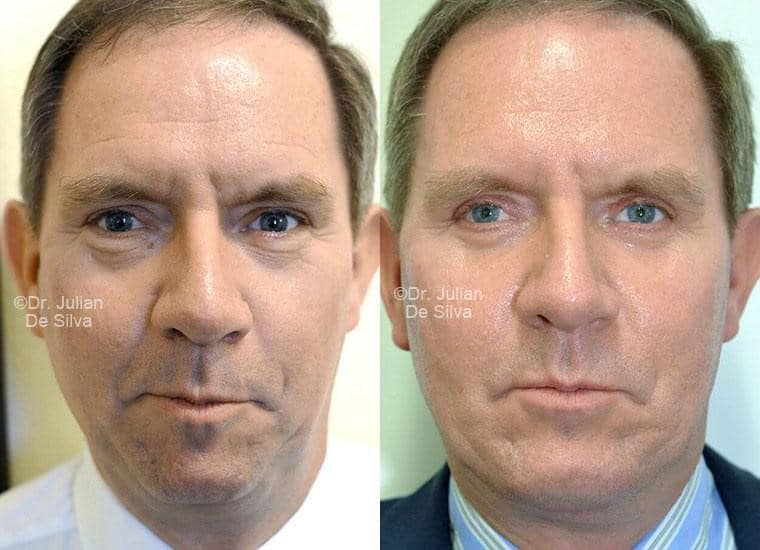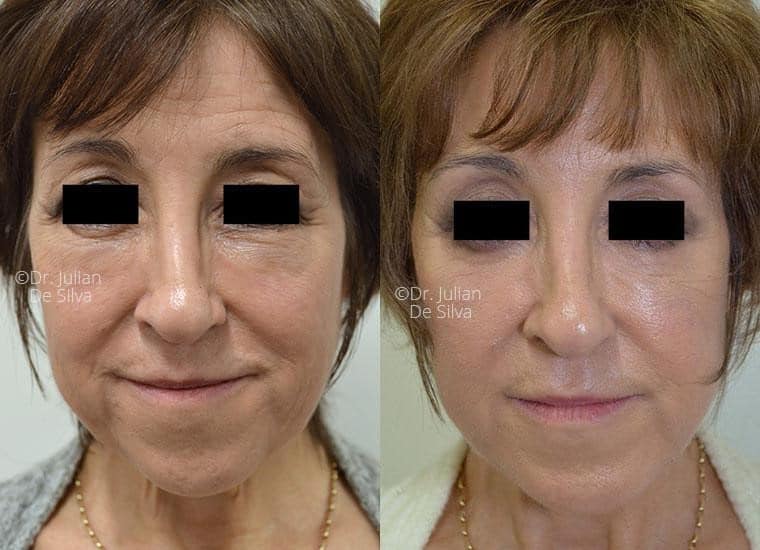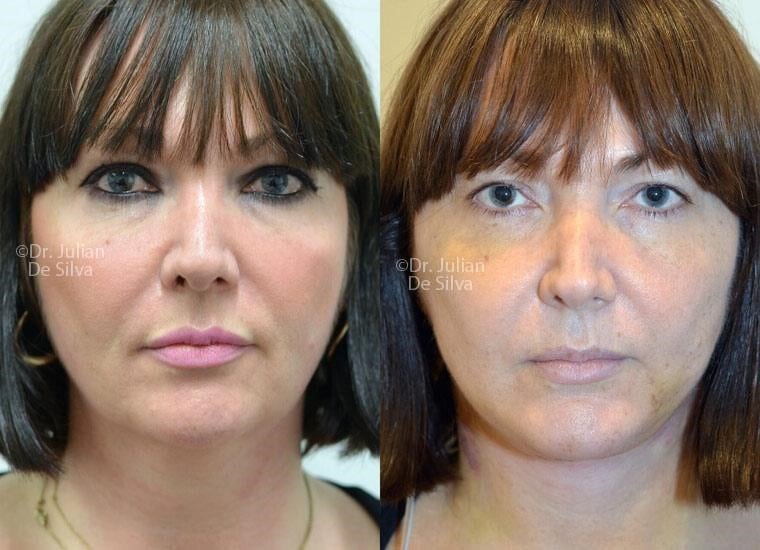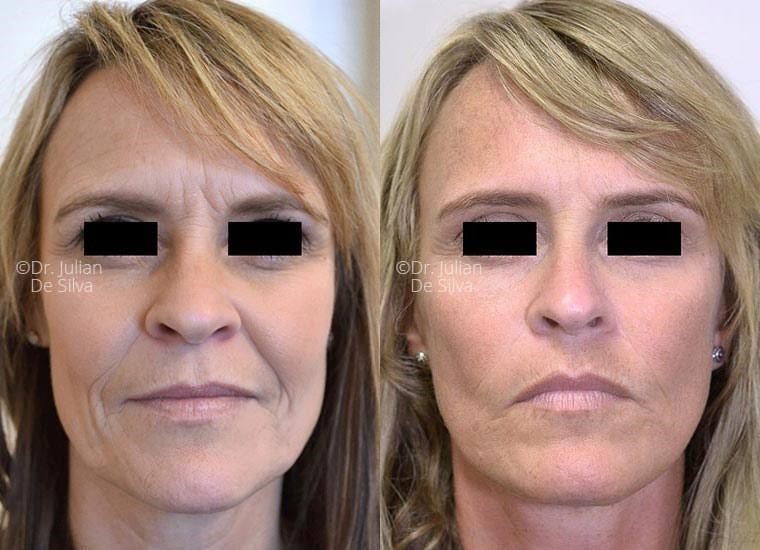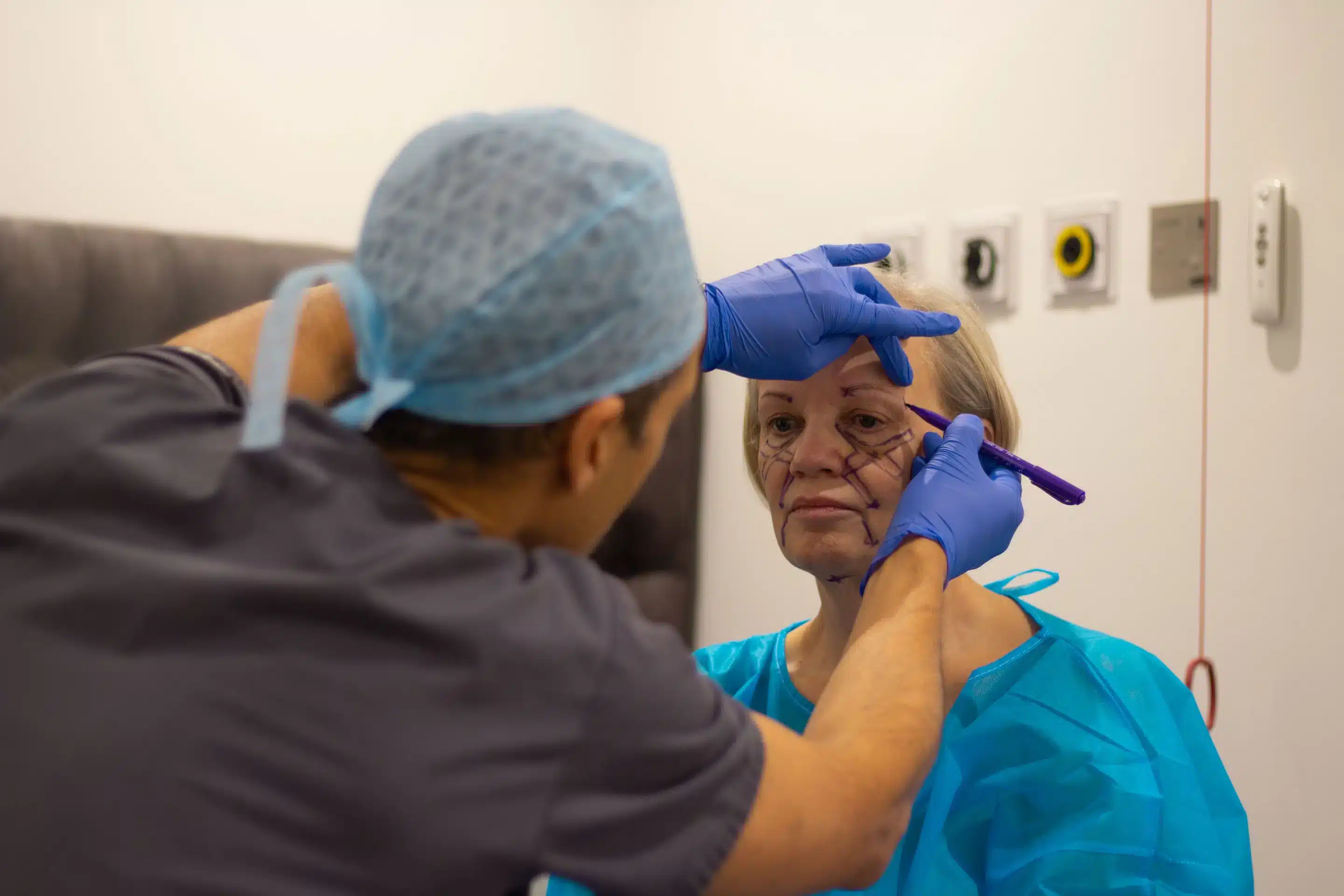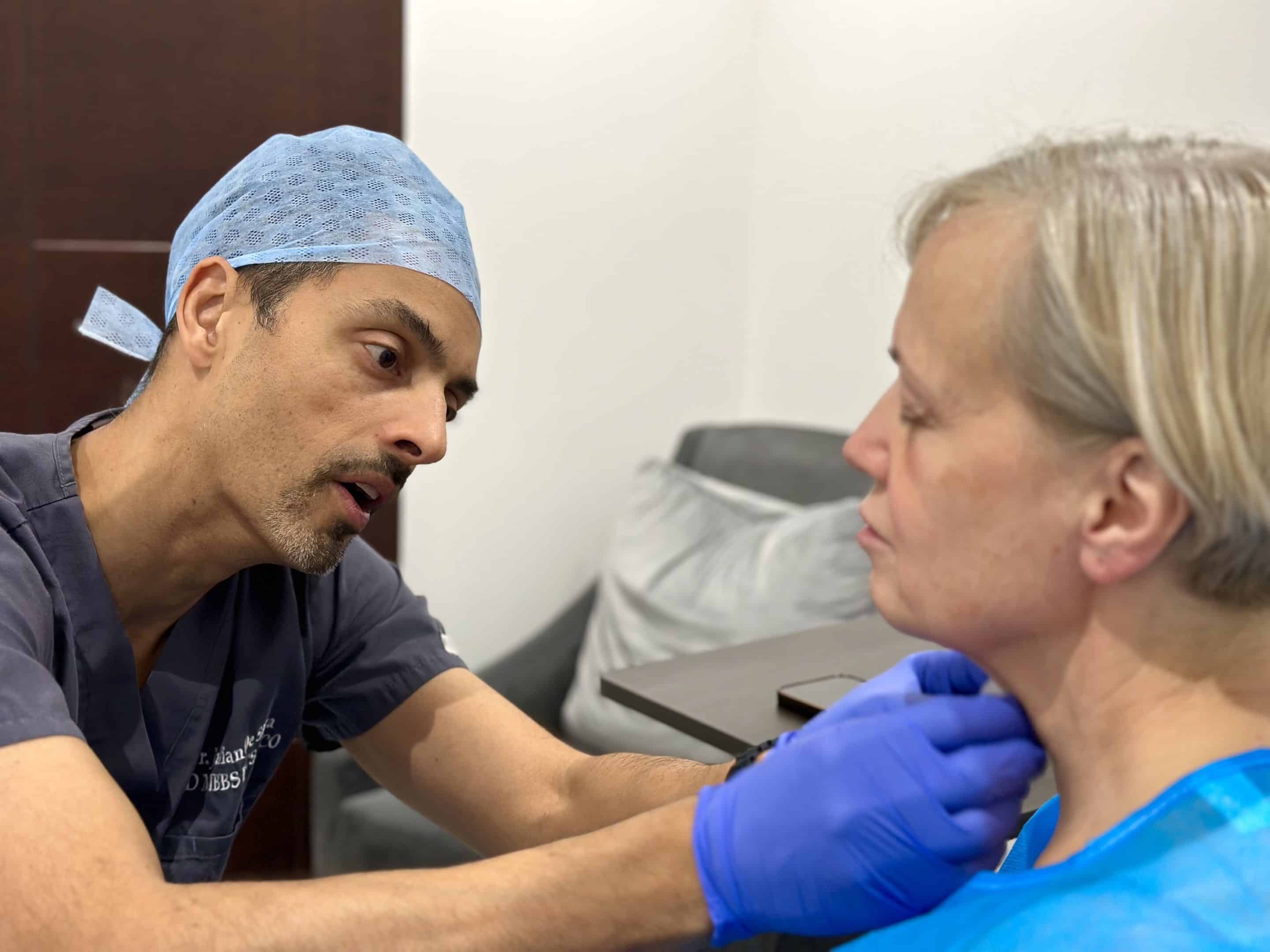Maintenance after facelift is an important step.
A facelift may be a game changer for you in terms of a fresher and rejuvenated look. However, you need to maintain its results. Hence, doing much-needed maintenance is crucial if you want to enjoy your facelift’s results for a long period of time.
But how exactly do you do that? Are there guidelines you can follow for maintenance after a facelift?
In this article, I will talk about how long a facelift usually lasts and the things you can do to maintain its results as long as possible. I will also discuss non-surgical treatments for maintenance after a facelift.
How Long Does a Facelift Last?
You can make a facelift’s results last longer with maintenance after facelift.
Facelift surgery usually lasts for up to one decade. However, a facelift might last longer if you invest in yourself and maintain your appearance year after year.
I, Dr. Julian De Silva l, offer to continue to care for all my patients after your facelift surgery. In particular, I offer life-long care. I will see you annually and give you continuous care by forming long-term connections with you, should you choose to be my patient.
The patient’s skin quality, the specific technique used by their plastic surgeon and the lifestyle they lead in the years after their procedure are all factors that can influence the lifetime of facelift surgery outcomes.
In general, healthier, younger skin that has retained some suppleness is more resilient after surgery. The quality of one’s skin is frequently a good indicator of whether or not a facial rejuvenation procedure will be successful.
Facelift procedures that just tighten loose skin don’t usually provide benefits that endure as long as those that elevate and tighten both the skin and the underlying muscles of the face.
Patient Measures for Maintenance After Facelift
Maintenance after facelift includes playing your part in it.
Here are the things you can do for maintenance after facelift:
Wear sunscreen.
The sun’s UV radiation can hasten facial ageing and cause more wrinkles and sun damage, including hyperpigmentation. Apply sunscreen every day to protect your skin from UV damage (SPF 30 or above).
Maintain a healthy lifestyle.
Avoid smoking, which causes skin ageing, extra facial wrinkles, and a loss of natural facial fat and elasticity. Healthy living entails moderate alcohol use, as well as avoiding weight fluctuations, which can wreak havoc on your facelift outcomes. Eating healthily, drinking enough water to stay hydrated throughout the day, and exercising can all help you achieve your goals.
Use high-quality skincare products.
A consistent skincare routine, which includes sun protection and, in certain cases, retinol, can be beneficial. We can recommend specific products for you, although we have no commercial interest and do not sell skincare products.
Manage your stress levels.
Chronic stress is bad for the entire body, so it’s important to control it. Stress has been demonstrated in studies to hasten cellular ageing, which has health concerns. Working on anxiety management, positive energy, and overall well-being goes a long way toward enhancing health and well-being.
Drink plenty of water every day.
Hyaluronic acid is one of the key components in many dermal fillers. The extraordinary ability of hyaluronic acid to capture and retain water is one of the reasons it is utilized to restore volume at injection sites.
Thus, you must maintain hydrated if you want your skin to seem as tight and smooth as possible, whether or not you use hyaluronic acid injectable treatments. Make it a habit to drink at least two liters of water (eight glasses) every day after you’ve had a facelift.
Get your rest.
Another severely underappreciated skin care tip is to make sure you’re getting enough sleep. This is particularly important during and after your facelift recuperation.
When you don’t get enough sleep, your body creates more cortisol, the stress hormone. It not only aids weight gain as your body prepares to deal with increasing stress levels, but it also causes significant inflammation and increases edema. Make getting your z’s a priority if you want healthy, smooth skin.
Non-Surgical Treatments
Non-surgical treatments help with maintenance after facelift.
My aim is to provide lifelong support to our patients. Here are non-surgical treatments for maintenance after a facelift:
anti-wrinkle treatment
Despite the fact that anti-wrinkle treatment is a highly effective non-surgical treatment option, it’s crucial to know what it can and can’t achieve.
For one, anti-wrinkle treatment is an injectable neurotoxin that works to relax the muscles that cause wrinkles on the face. It is commonly used to reduce wrinkles on the forehead, around the eyes (crow’s feet), and between the brows. The effects of anti-wrinkle treatment usually last three to four months before requiring a follow-up treatment.
Patients frequently inquire about whether or not they will require anti-wrinkle treatment after undergoing a surgical facelift. While a facelift will undoubtedly result in a dramatic and striking new appearance, patients should be aware that a standard facelift focuses on the mid and lower face.
Hence, patients who use anti-wrinkle treatment to smooth out action lines on the forehead and around the eyes on a regular basis can benefit from ongoing injections, even if they may be able to get treated less frequently than before their facelift.
Laser Resurfacing
Laser skin resurfacing is a technique aimed at diminishing facial lines and various skin flaws such as blemishes and marks from acne.
Essentially, focused pulses of laser light target the irregular skin, meticulously removing it layer after layer.
If you have fine lines or wrinkles around your eyes, lips, or forehead, superficial acne scars, or non-responsive skin after a facelift, laser skin resurfacing may be right for you.
However, you may not be a candidate if you have acne or have very dark skin. Stretch marks should not be treated with this method. Before undergoing laser resurfacing, you should consult with your doctor to see if it is the best operation for you.
I, Dr. De Silva, have invested in the latest state of art laser that tightens deeper and superficial skin. I use this in combination with PRP (platelet-rich plasma) to heal your skin faster.
Radiofrequency
Radiofrequency (RF) tightens the skin millimeters at a time.
Tighter skin and a smoother surface – meaning fewer wrinkles – are the two most evident effects of this procedure. However, because RF therapy is so adaptable, you can also anticipate seeing a reduction in solar damage. Patients reported clinically significant improvements in mild to moderate indications of sun damage after three months of RF treatment, according to studies.
RF treatments stimulate the body to manufacture new collagen and elastin. Old, damaged skin is replaced by new, healthy skin as a result of these impacts. These cells are inherently firmer and tighter, but it takes time for them to mature. You will not appear one way on Thursday and another on Friday or Saturday.
The majority of patients seek gradual changes because they want to appear like themselves, but better. They’re searching for modest changes rather than drastic ones, and RF gives exactly that.
Fillers
Dermal fillers help with maintenance after facelift.
Occasional fillers made of hyaluronic acid will replenish lost volume, in moderation, as too much filler looks fake. Many of my patients are worried about having fillers as we have all seen people who do not look natural. However, good filler treatments are subtle, conservative and natural. Plus, you would not be able to tell if someone had treatment!
Larger portions of your face lose volume and shape as a result of ageing changes beneath the surface of the skin, where the gradual loss of supportive tissue structures and the long-term effects of gravity cause larger areas of your face to lose volume and shape. The cheekbones and chin are particularly affected by these changes.
Dermal filler treatments are used to increase volume to beauty spots or to replenish volume that has been lost. We employ dermal fillers to lift and sculpt the face for immediate effects that last 6 to 24 months.
Advanced dermal fillers also help to replace hollows and build up cheekbones, restoring ageing volume loss in our cheeks. Although numerous hyaluronic acid filler products can be used, some offer qualities that benefit the cheeks and function well in places where there is more volume loss.
With our filler treatments, you may expect to see immediate results. After treatment, there will be some little swelling that will go away overnight for the majority of individuals. Mild swelling can last up to five days in rare cases. There’s also a chance that you’ll get a slight bruise, but it’ll go away in a few days.
The complete results of fillers will be seen roughly five days after the swelling has subsided for most individuals. The benefits of our cannula-based approach, deeper filler application, and filler selection may last 18–24 months, though results vary from patient to patient
Platelet-Rich Plasma (PRP)
PRP injections or regenerative medicine is characterized as a vampire facelift because it improves skin quality.
A vampire facial, often referred to as PRP facial rejuvenation, is a cutting-edge skincare treatment tapping into your body’s natural healing abilities.
The wonder unfolds when platelets within plasma are intensified. By separating all the elements of your blood based on their density, we achieve a rich concentration of platelets in the plasma.
Oxygen Therapy
An oxygen facial is a procedure that involves using a machine to enhance collagen formation while also nourishing your skin.
The epidermis, or the outer layer of your skin, is sprayed with extremely concentrated oxygen molecules by the oxygen facial machine. This concentrated oxygen is given to your face and neck using the equipment.
An oxygen facial works by infusing your skin’s outer layer with all of the important vitamins and minerals, as well as botanical extracts, using a machine. In fact, many famous celebrities, including Madonna, favor this option.
This is your path to smoother, healthier, and plumper skin, and we’ll show you how it’s done.
Furthermore, skin cells are constantly dying and regenerating, and an oxygen infusion can speed up the process. This helps the skin repair more quickly, which aids in the healing of acne and accompanying scars.
An oxygen facial is a popular anti-ageing therapy. This is because it increases the creation of collagen, a protein that helps hold skin cells together. Collagen deteriorates with age, as does the link between skin cells, resulting in wrinkles. With its collagen-boosting characteristics, an oxygen facial can help counteract this effect.
LED Therapy
LED therapy helps with maintenance after facelift.
LED therapy (Light Emitting Diode) is a non-invasive treatment that uses light-emitting diodes for a number of aesthetic and medical goals. This sort of light treatment has been around for a while and can be used by people of various ages and skin tones. It can also be used in conjunction with other procedures, such as facials and radiofrequency treatment, with no harmful side effects
Some of the benefits of choosing this type of light therapy include increasing the production of elastin and collagen and supporting the detoxification of cells.
If you want an effective LED therapy in London, you should work with a board-certified specialist like me, Dr. De Silva, who has a track record of producing amazing, natural-looking results utilizing non-invasive methods.
Any region of the body might be affected by skin problems. Fortunately, at Harley Street Face Clinic, LED therapy can be utilized to effectively treat a range of issues without the use of intrusive procedures.
LED therapy with me on Harley Street in London can help speed wound healing, renew the skin, and decrease visible scars, in addition to the list above. This is dependent on the wavelength of the light being used, therefore selecting a reputable skincare specialist will increase your chances of achieving excellent results.
Conclusion
Maintenance after a facelift is crucial to making the results of your facelift last.
Do you want to talk to a doctor who will take care of you after your facelift surgery? Contact us to book a consultation with Dr. Julian De Silva now!

